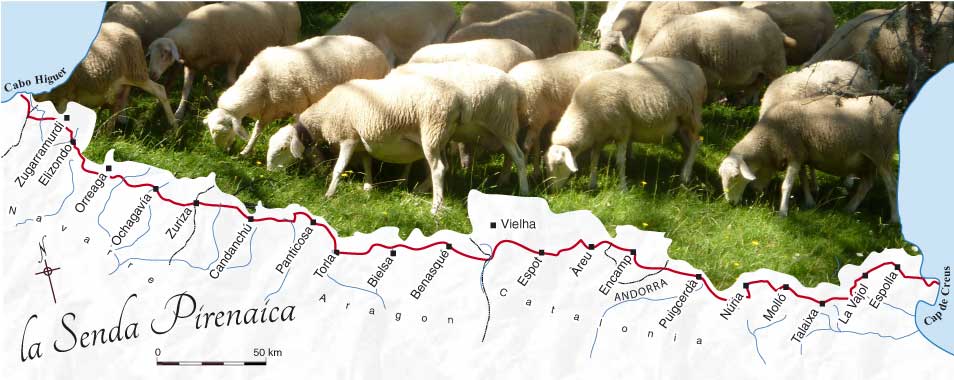
The French government has recently promised to reinforce of the brown bear population in the western Pyrenees. Predictably this has stirred up French shepherds following an increase in attacks last year. Demonstrations are being planned. But on the other side of the border, in Catalonia, things are much quieter. Shepherds seem to be more willing to accept the new constraints.
So it is perhaps unsurprising that the Catalans have been the first to announce the 2017 bear statistics, in a press release dated 29 March. With seven births but two bears missing, presumed dead, there are now 43 bears distributed over 4,900km2 in Spain and France. Their footprint has expanded from 3,800km2 in 2015.
Twenty-five bears were identified in Catalonia in 2017; a further 18 were only seen in France. However, many of the 25 ‘Catalans’ must have also crossed the border – the French authorities have not yet released their own statistics.
Moonboots and Patoune have been missing for two years so they are probably dead, though the Pyros, the grand old man, was seen on an automatic camera in April 2017.

Preventive measures
In Catalonia, 46 attacks were attributed to bears last summer. In 29 cases animals were killed; the other 17 attacks concerned beehives. All but three of the incidents were in the Val d’Aran (north of the Pyrenean watershed). 177 sheep, 1 lamb, 3 goats, two mares, and one colt were killed.
In an effort to reduce these figures, the PirosLife programme has been promoting preventative measures such as recruiting shepherds, the use of guard dogs, and bringing the flocks back to a sheepfold at night. In 2017, 39,299 animals were protected by 28 farmers’ cooperatives, helped by 13 shepherds. In the Val d’Aran, six shepherds were employed by six cooperative to look after 6450 animals. Three of the collectives were organized by PirosLife; the others were private initiatives.
Tracking the bears
Over the year, the bears’ presence was recorded by automatic cameras, fur traps and footprints: a total of 1389 clues which have been used to identify them.
| Catalonia | Aragon | Navarra | France | Total | |
| Footprints |
10 |
– | 1 |
118 |
129 |
| Fur |
120 |
0 |
0 |
321 |
441 |
| Photos and videos |
221 |
10 |
0 |
171 |
301 |
| Attacks |
46 |
5 |
0 |
173 |
254 |
| Droppings |
49 |
– |
0 |
70 |
119 |
| Observations |
12 |
0 |
0 |
20 |
32 |
| Other |
0 |
0 |
0 |
14 |
14 |





















In 2017 while hiking the GR11 I photographed what I thought were bear claw scratch marks of trees on stage 15 Baños de Panticosa to San Nicolás de Bujaruelo and also on Stage 18 Refugio de Pineta to Parzán. I showed them to a chap working at a bar in Bujaruelo and was roundly dismissed, so it’s interesting to read about this rewilding project and helps support my suspicions!
How high were they off the ground? I’d love to see the pics, even though I’m no expert and won’t be able to tell you if they could be the real thing. By the way, I am currently writing a book on the subject of humans and wildlife in the Pyrenees. I’m interviewing shepherds and environmentalists and getting a variety of opinions, as you might expect.
And I would like to see your book when it is published.
Nearly written, so should be published in 2021
I came across some strange marks in the snow above Graus on the way up to Certacen while walking the the Porta de Cel route,(I was slightly off route in the snow) I would swear they were not crampon marks, think I have a photo somewhere